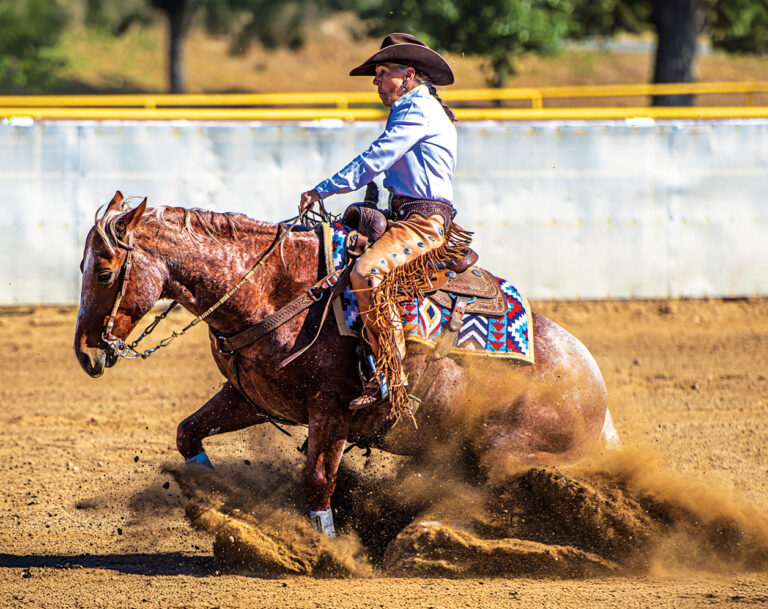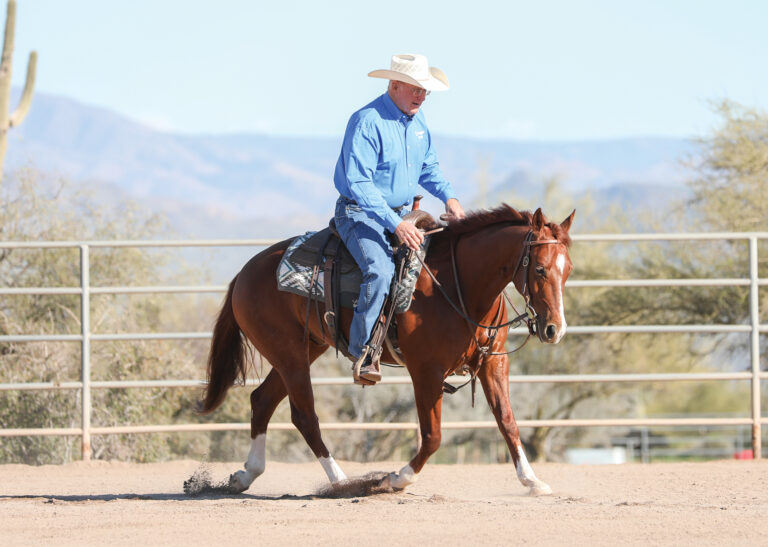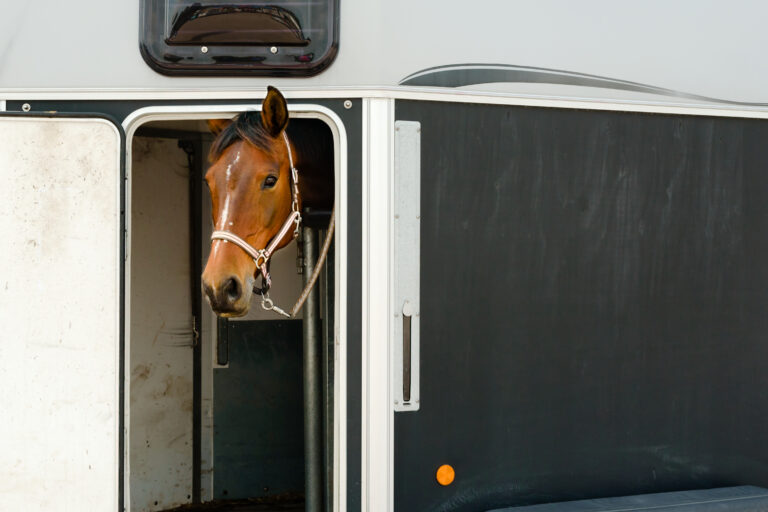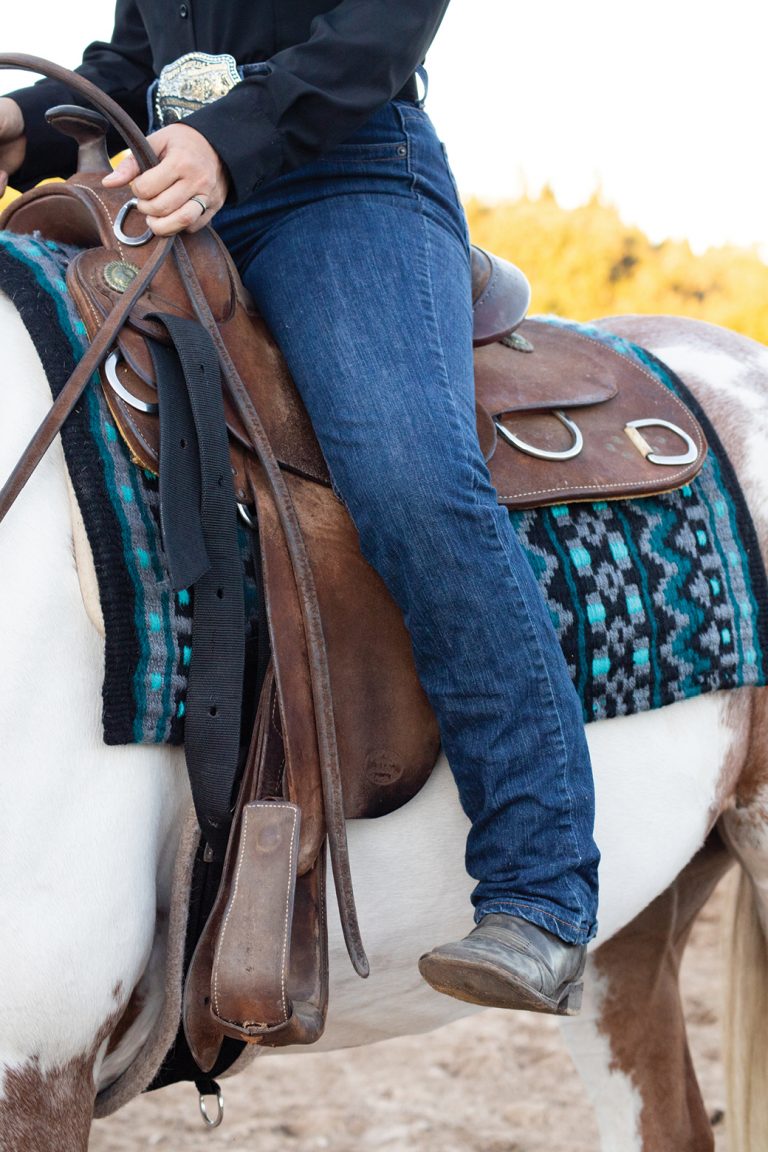Before you hit the trails, invest the time to evaluate and develop your horse’s fitness level to ensure a fun, safe, and smooth ride.
Whether you embark on your next trail ride with the intention of relaxing in nature, letting your horse decompress from arena work, see new sights, or put both of your skills to the test in rugged country, take time to evaluate your horse’s fitness level first. For some riders, a leisurely stroll down a trail is enough to bring you contentment and joy. Others seek out more rugged terrain and crave adventure and new country.
Regardless of your trail riding goals, I’m going to give you a few things to look for when evaluating your horse’s fitness for trail riding. And how to choose a trail horse that fits your needs.
When purchasing a trail horse, I recommend you take certain factors into account. Here are some tips to determine your goals and objectives with this horse. And guide your buying process so you end up with a partner that fits your needs.

Before You Buy
One of the first things to do before horse shopping, is to evaluate your riding skills. Taking a step back and honestly evaluating your riding skills isn’t just about finding areas to grow in as a rider. This will help you find a horse that will fit your skill level and be a suitable companion.
Try to honestly reflect on your strengths, weaknesses, and long-term riding goals. Do you feel you’re skilled enough to support a young horse out on the trail? Or would you benefit from a more seasoned mount?
If you’re purchasing a trail horse, I recommend that you see him out on the trails as part of a pre-purchase plan. Seeing him in action will help you determine if he’ll suit your needs. And if your skills are up to par. Taking time to reflect on not just your goals with this horse, but your current riding level, is critical to making an informed decision when selecting your next trail horse.
What Are Your Goals?
After you’ve reflected on your skills as a rider, now it’s time to determine your goals with your new horse. If you plan to mostly walk down flat trails for short day rides, your horse search will look vastly different than if you want to ride hilly, mountainous, and rugged country.
Do your best to be clear with what you will be asking this horse to do. Do you see competitive trail riding in your future? Or are you looking for a four-legged friend to mosey down the trails with and just relax in nature? The answer to this question will also determine the fitness and soundness level of the horse you buy. There are many horses who are serviceably sound and can happily walk down a trail but would not hold up to faster speeds and rugged terrain.

Having a strong understanding of your own riding skills and goals, you can determine what you are looking for in a new horse. Knowing the primary type of trails you’ll ride will give you a good idea of basic skills your next horse should have.
A Solid Foundation
If hitting more challenging trails on a seasoned horse is in your plans, you might look for a horse that has a solid foundation of basic maneuvers. This could include sidepassing, lateral movement, backing up, and crossing water. He should be comfortable on the trail and have been exposed to the sights and sounds that can crop up unexpectedly. If you’re seeking out a younger horse and are confident in your skill set to support him on the trails as he learns, I recommend looking for a horse with solid two-handed steering, and a stand still cue.
For me, this means a young horse will bend his head around toward my stirrup. This means I don’t have to hope they stand-still because I have an actual trained response. I also can use this to cue them to stand still when mounting.
Basics of Developing Trail Horse Fitness
Whether you just purchased your first trail horse, or you and your horse are seasoned veterans, don’t embark on an adventure without properly conditioning him first. Determining your primary trail spots will help you understand the level of fitness your horse needs to have a safe and fun ride. If you plan to take a hiatus from riding during the winter, you’ll want to spend time getting your horse fit again before you both head back out.
A younger horse with no trail experience doesn’t know how to effectively use his body on the trails. Especially with the weight of a rider. This means that the same trail that’s easy for an experienced horse to do is more challenging for one with little experience. Ponying your inexperienced horse on a trail before riding him can help him figure out his footing without the added weight of a rider.
Even seasoned trail horses need time to build their fitness up before heading out. Flat trails might be like arena work, but hills are not. For this reason, I tend to ride out on flat trails and then back to the barn for the first few weeks. When I approach a decent-sized hill, I evaluate my horse’s breathing and general feel before deciding if I’m going to ask more of my horse.

To help a young horse develop his muscles and get comfortable on the trail, pony him from a seasoned horse for the first few rides. Photo by Donnie Rosie
Pay Attention
As I condition my horse, I find that the elevation change is enough to increase his breathing. But as his fitness level increases, his heart rate and breathing begin to slow down.
This is when I’ll begin increasing my distances. I ride mostly at a walk on early rides, building up through the summer until I’m often riding the majority at the trot or lope, except down steeper hills. By the time my horse is fit for this, we have logged many base-building conditioning rides. And I can detect changes in my horse’s recovery from past experiences. Building your horse’s fitness level is a patience game. Self-control now will pay off in 3 to 4 weeks.
If you notice your horse has labored breathing as you begin riding him, don’t be afraid to get off and lead him during these stamina building rides. This is an underutilized skill for many trail riders. From a training perspective and a fitness perspective it’s great. Your horse gets the benefit of a short break. You get the benefit of stretching your legs and evaluating your horse from a different perspective. If you struggle with fear, dismounting frequently can help you release any tension you might be carrying.
Not Worth the Risk
Taking an unfit horse out for a challenging trail ride can pose some serious risks to his health and well-being. Horses are amazingly generous and will often keep going, especially in groups. On a trail ride this increases the chance of tripping, taking a misstep, or falling. If this doesn’t happen on the trail, there are the side effects that happen afterward of having an extremely sore body with an increased potential for injury.
I realize that many people don’t have easy access to trails. And it can be tempting to haul somewhere on the weekend and go for a long ride. If you choose this, please factor in the hills and the fitness level.
A horse that’s not properly prepared for a long or challenging ride can suffer injuries like muscle strains, joint issues, and fatigue. A horse that isn’t properly conditioned can even become frustrated, anxious, or display other behavioral issues that can be unsafe for both of you.

Assess, Evaluate, and Let’s Ride!
If you’re unsure that your horse is fit enough to hit the trail, start by knowing your trails and assessing his physical fitness the first time you head out. Go out a short distance and come back on the same trail. This ensures you don’t miscalculate, and you can always go farther the next ride. Again, patience is key here.
It’s important to know the trails that you’re going to ask your horse to cover. Go walk the portion you intend to ride yourself or talk with a trusted friend. Evaluate possible challenges; hills, bridges, hunting blinds, mountain bike trails that cross. Answer the question: Do I think my horse will react to this? What will I do if my horse does react? Am I prepared? Is my horse prepared? How can I practice for this at home (ride across tarps, have someone ride a bike past you, get on and off, etc.)?
[Stuck in a training rut? Try THIS]
Spring Time Prep
In the spring, when I’m building up my horse’s fitness for trails, my arena rides are as long or longer than my trail rides, and more intense. For example: If my first trail ride is going to be 30 minutes (15 out and 15 back) I want to be riding longer than that in the arena, including at a trot and lope. As I extend my trail rides to 30 minutes out, 30 minutes back, my arena rides are at least an hour, and although I’m walking on the trail, I’m trotting and loping in the arena. Remember, my future goals include trotting and loping on the trail, and this might be different for you.
Once your horse’s base is built, you can begin going on trail rides that are longer than your arena rides. For example, you can walk the trails for an hour and a half. While still keeping your arena riding to about an hour.
Putting the time and patience into properly conditioning your horse for the trails you’ll be riding, helps ensure a safe, fun, and enjoyable experience for you both. Heading out for an all-day ride with an unfit horse can lead to injury and strain for your horse. And also a day of frustration for you. Horses can be stoic creatures and not show pain or fatigue easily. So, it’s up to you to take the time to condition him, build his endurance, and develop his fitness. This is an investment in his health and longevity. But it’s also an act of kindness, respect, and devotion for our equine companion that gives us his all.




